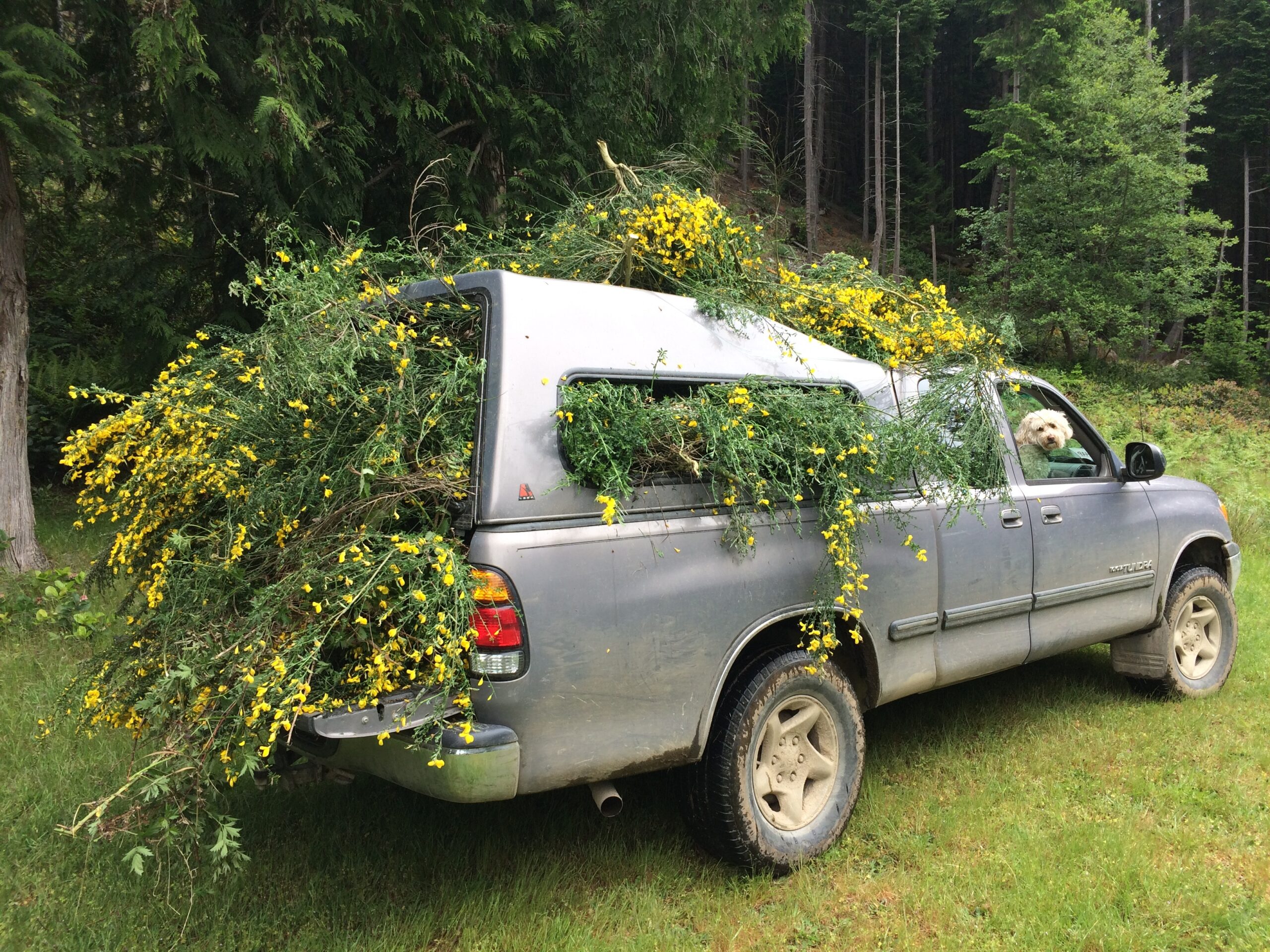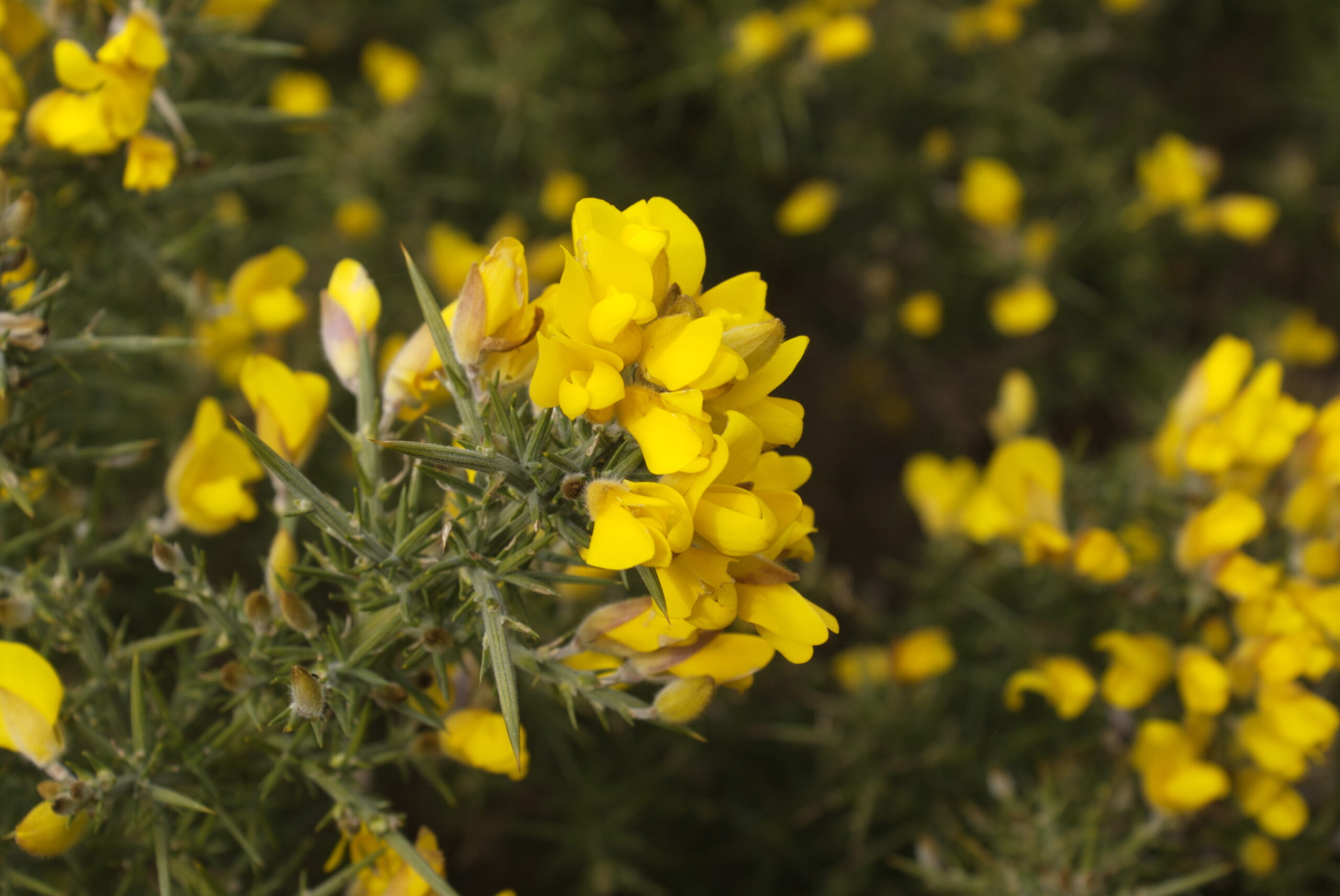An invasive plant is a plant species that has been introduced into a region either accidentally or intentionally. Due to their robust growing abilities and a lack of natural predators or pathogens, invasive species often take over landscape making it extremely difficult for native plants to re-establish and grow in the region. Invasive species can cause great damage to the environment, human/animal health, the economy and recreation and require our attention and effort to prevent this damage from happening.
As temperatures begin to warm and plants start to bloom, now is the time to be thinking about invasive species and how you can be a steward towards your local ecological environment. Due to many invasive species having a rapid ability to self seed, removing these plants appropriately prior to seed development is key for successful efforts in invasive species removal.
The two plants that are of common concern at this time of year – due to their bright yellow flowers signaling growth – are Gorse (Ulex europaeus) and Scotch Broom (Cytisus scoparius). Both of these yellow flowered plants may seem like an innocent pop of colour decorating the landscapes, however their impact on surrounding ecosystems (particularly Garry oak) have detrimental long-term effects.
Scotch Broom – Cytisus scoparius
Scotch broom is found in areas where the soils have been disturbed on Galiano Island. Commonly taking over large swaths of land, it’s complex root structure makes it a resilient plant growing in well-drained, dry sandy soils with full sunlight.
When removing scotch broom, small plants can be gently pulled from the soil being sure to include all the roots in the removal process. If the plants are larger, cut the plant close to the base without causing soil disturbance. It is essential to remove all adult individuals every year before the seeds are set. This process can take many years of annual removal activities to ensure no remaining seed is left behind on the site. This is not a ‘one-and-done’ process, but your hard work will pay off in time!
For more information check out Garry Oak Ecosystems Recovery Team document on Scotch Broom and the Invasive Species Council of BC
Gorse – Ulex europaeus
Gorse, while similar looking to Scotch Broom, can be clearly distinguished by its spiky branches, evergreen leaves and much larger yellow flowers. Once gorse is established, it produces acidic plant debris onto the soil greatly limiting the ability for native grasses and other plants to establish and grow in the soil. Due to the lack of native plant undergrowth, gorse can often contribute to erosion on slopes due to weak soil layers.
If the plant is young and in loose, sandy soil, it can be removed very carefully by digging around the entire root mass making sure no roots are left behind. Be sure to report your sighting of gorse.
For more information check out Garry Oak Ecosystems Recovery Team document on Gorse and the Invasive Species Council of BC
Other Species to Watch Out For!
There are many invasive species that cause stress to native plants in the area. It is worthwhile to become acquainted with these species so you know what to watch out for! Garry Oak Ecosystems Recovery Team as well as the Invasive Species Council of BC have wonderful resources to explore. We have linked a few species to get you started below, but we encourage you to take your invasive species education further and help be a steward for the land!
English Ivy – Hedera helix
Garry Oak Ecosystems Recovery Team Fact Sheet
Canada Thistle – Cirsium arvense
Invasive Species Council of BC Fact Sheet
Himalayan Blackberry – Rubus discolor
Garry Oak Ecosystems Recovery Team Fact Sheet
Tansy Ragwort – Senecio jacobaea
Garry Oak Ecosystems Recovery Team Fact Sheet
Invasive Species Council of BC Fact Sheet
Daphne, Spurge-laurel – Daphne laureola
WorkSafeBC Report Fact Sheet at www.worksafebc.com



